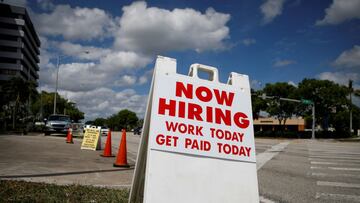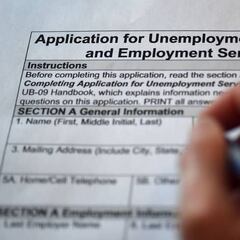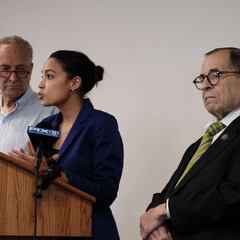Did states ending federal unemployment benefits see decreases in June?
At the national level, the unemployment rate held steady, but some states did see fluctuations. Did states ending federal benefits see higher decreases?


In May, as the national vaccination campaign picked up speed and more businesses started to reopen, many Republican governors began to announce that they would end the payments of federal unemployment benefits.
Since Montana and Carolina became the first states to make the change, over twenty others have followed, including Louisiana, led by the only Democrat.
Initial unemployment claims are now at the lowest level since March 2020. This is the American Rescue Plan, our vaccine strategy, and our economic plans at work. pic.twitter.com/zMchR8NUOW
— The White House (@WhiteHouse) July 15, 2021
These governors justified the ending of benefits by saying that they contributed to labor shortages. Many of these leaders take issue with the $300 federal topper sent in addition to state benefits. Some studies have shown that the additional federal payment bumps income above what many on unemployment were making when they had a job. For the GOP, this has led to people opting to stay home rather than find their next gig.
However, some economists disagree that these benefits are keeping people at home due to their temporary nature. Others believe that this argument is being made to protect companies who refuse to offer higher wages to attract workers.
The $300 enhanced payment forms part of the American Rescue Plan, which allocated funding for the increased benefit to be paid through 6 September. By cutting the payment, states hope workers will rejoin the workforce more quickly, as their incomes drop significantly.
At the national level, the unemployment rate remained unchanged in June. But, on 16 July, the Bureau of Labor Statistics published the state-level unemployment rates for June, which provide greater insight into seeing if this policy choice is moving the unemployment rate down.
See our interactive graphics on today’s new #BLSdata on state #employment and #unemployment https://t.co/xr2omHVLAe #DataViz
— BLS-Labor Statistics (@BLS_gov) July 16, 2021
What states are ending benefits?
There are a total of twenty-six states that have called to end benefits: Alabama, Alaska, Arizona, Arkansas, Florida, Georgia, Idaho, Indiana, Iowa, Louisiana, Maryland, Mississippi, Missouri, Montana, Nebraska, New Hampshire, North Dakota, Ohio, Oklahoma, South Carolina, South Dakota, Tennessee, Texas, Utah, West Virginia, and Wyoming.
Has unemployment decrease more in these states?
Since April, these more states planning to end benefits have seen an increase in their unemployment rate. Eight states have all seen increases, while four states -- Kansas, Vermont, Illinois, and Michigan -- that will continue the payments have had their unemployment rates rise.
States ending benefits that saw an increase in unemployment from April to June 2021
State |
Unemployment Rate | ||
April 2021 |
June 2021 |
Chnage | |
Ohio | 4.7 | 5.2 | +.5% |
Iowa | 3.8 | 4 | +.2% |
Florida | 4.8 | 5 | +.2% |
Missouri | 4.1 | 4.3 | +.2% |
Indiana | 3.9 | 4.1 | +.2% |
South Dakota | 2.8 | 2.9 | +.1% |
New Hampshire | 2.8 | 2.9 | +.1% |
Arizona | 6.7 | 6.8 | +.1% |
Related stories
Arkansas, Maryland, Mississippi, Montana, and Wyoming have all seen no net changes in their unemployment rate since April. Aside from Maryland, which is under judicial order to continue the payment of federal benefits, all others have stopped their distribution.
It is still early to tell if the ending of payments is leading to quicker decreases in unemployment. However, from April to June, the data shows that in states where benefits had or will end, unemployment decreased on average by .05%. Meanwhile, in the twenty-four states plus Washington DC, the rate of decrease was higher, with an average of .27%.

